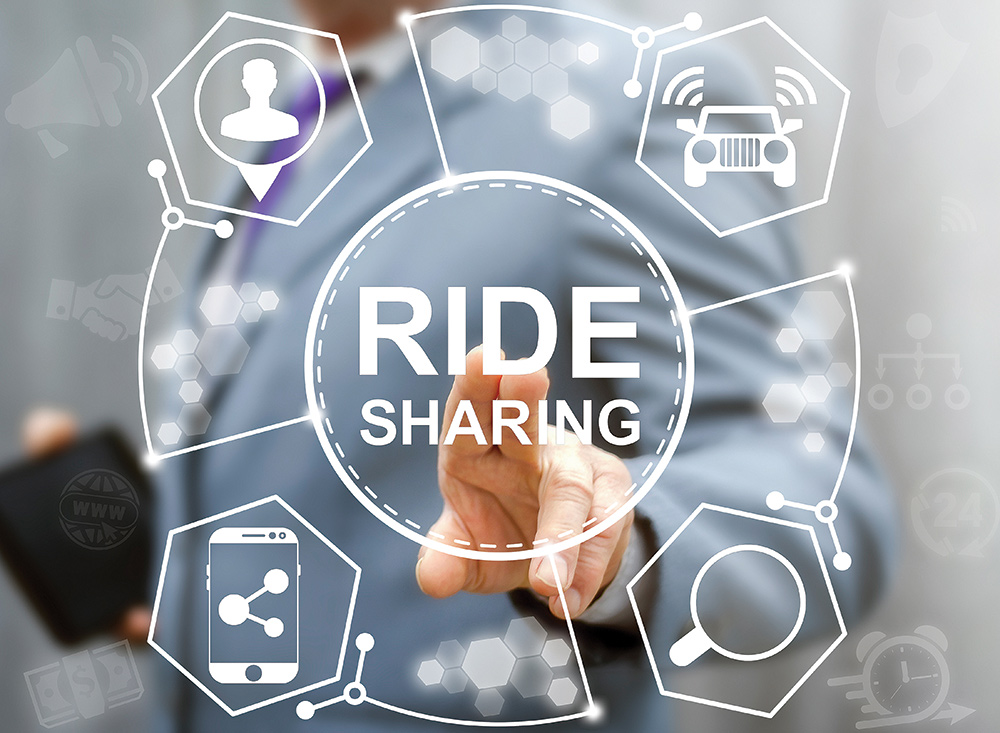
Many ride-sharing platforms have been emerging where customers are connected to riders of privately held vehicles through mobile applications. Ever since the introduction of the ride-hailing concept, commuters are gradually relying more on this modern system of transportation. The growth of this system in Nepal is also due to insufficient public transport system, lack of convenience in relation to hailing conventional taxis, and increasing population and business operations. Further, people moving towards a gig economy have also contributed to the growth of the ride-sharing business in Nepal.
Within the past couple of years, there has been a significant increase in the number of riders engaging in ride-sharing businesses. New ways of working facilitated through digital platforms pose pressing questions about the employment status of the people who do the work involved. Despite the disruptive success over the years, there are pertinent service and employment issues relating to ride-hailing business in Nepal. The legal questions faced by riders and platforms are still largely untested by the courts of Nepal. The public administration has also not provided any policy clarity in relation to the same.
Policy Issues relating to the Ride Sharing Business
In Nepal, a person is considered an employee of another, when the following are met:- Any entity registered in Nepal or an individual hires an individual for performance of certain service, and A contract of employment is entered between the entity and the individual.
- Even if the contract is not per se titled as contract of employment, the contract is such that an employer-employee relationship is created, the same would be deemed to be a contract of employment.
Business Model
The manner in which most ride-sharing applications in Nepal work is such that the owner of the application acts as an aggregator, i.e. provides a platform for the riders and their prospective customers to be connected. The aggregator charges a commission for providing this platform. The aggregator may also collect data to conduct market analysis. However, if the aggregator engages in the following, in relation to the riders, then it may be legally construed that the relationship between the aggregator and rider is that of employer-employee:- The aggregator is involved in controlling the performance of riders;
- The rider is made to work as per the discretion of the aggregator in terms of the routes of rides, timing of rides, etc;
- The aggregator is involved in evaluation and monitoring the performance of riders and taking actions for improvement/disciplinary measures;
- The aggregator is dictating the terms of engagement and remuneration;
- The rider is required to perform the service with the assets of the aggregator.
Consequences of employer-employee relationship
If an employer-employee relationship is established, then the employer is duty bound to provide certain benefits to the employee. These benefits are determined based on the nature of classification of employment. The Labour Act 2017 has provided an exhaustive categorisation of the meaning of the term ‘employment’, which includes Regular Employment, Work-Based Employment, Time-Bound Employment, Casual Employment and Part-time Employment. The above classification is based on the nature of employment, the working modality and performance of designated work. The benefits in relation to all types of employment are as following depending on the tenure of service: Execution of employment contract outlining the basic entitlements and working modality of employees- Minimum remuneration and social security contribution
- Paid leaves
- Festival allowances, insurances, bonus, overtime payment
- Terminal benefits based on accumulated leaves and social security contribution
- Protection against wrongful termination
International Practice
There has been a change in global perspective on the operation of the gig economy after the recognition of drivers of Uber as employees of Uber in the United Kingdom. The judgement in the Uber case highlighted that (a) the remuneration of drivers is fixed by Uber, (b) the contractual terms on which a driver performs are dictated by Uber, (c) drivers perform on Uber’s discretion, (d) Uber exercises a significant degree of control over the way in which drivers deliver their services and (e) Uber restricts communication between passengers and drivers. Owing to these reasons, an employer-employee relationship was established between Uber and the drivers. As such, the court was able to ensure minimum wage, paid sick leaves and health insurance benefits to the drivers as they were protected by employment laws. This has guaranteed a broader scope of employment protection and freedom for platforms to operate in a decent employment.Conclusion
On a first look, the business model of most ride-sharing platform is such that they are providing services to riders by connecting them to prospective customers. However, as discussed extensively, there may be circumstances which may lead to a creation of employer-employee relationship between these aggregators and riders. The consequence of such a relationship would be such that it would create a windfall burden on the business of the aggregator. As such, it is very important for the aggregator to seek adequate legal advice and conduct thorough due diligence while finalising the modality of the association with the riders. In the international market, this has been done through standardised contract wherein the relationship with the aggregator has been categorically defined and the modality of such relationship has been structured keeping in mind the situations that may trigger employment law. READ ALSO:
Published Date: May 2, 2022, 12:00 am
Post Comment
E-Magazine
RELATED Legal Eagle





